Chemical Resistance Improver for ABS Resin"FUNCTIVE"

Improves the Chemical Resistance of ABS Resin by Adding a Small Amount, and Solves the Problem of Plastic Degradation Caused by Various Chemicals.
Sanyo Chemical's Chemical Resistance Improver for ABS Resin
What is Great about "FUNCTIVE"
1
Improved Chemical Resistance of ABS Resin
From ethanol for disinfection, surfactant containing agents chemicals or gasoline, we propose chemical resistance improvement compositions according to the target application by selecting and combining our lineup.
2
Small Amounts of the Additive Has a Chemical Resistance Effect on Resins, and does not Degrade Resin properties.
An addition of only a small percent of the product has a chemical resistance effect, so the resin properties are not degraded.
3
Compatible with Transparent ABS Resin and ABS/PC Alloys
It can also be used to improve the chemical resistance of resin molded products that require visibility and impact resistance.
Why is the Chemical Resistance of ABS Resin Important in Medical Devices?
Chemical Resistance of ABS Resin
ABS resin is a thermoplastic resin composed of acrylonitrile, butadiene, and styrene. It combines the heat resistance and mechanical strength of acrylonitrile, the impact resistance of butadiene, and the gloss, processability, and stability of styrene, and has an excellent balance of rigidity and impact resistance. It is used in a wide range of fields, including automotive in-vehicle parts, housing-related materials, and office equipment housings for office automation products.
However, ABS resin is an amorphous resin and has the disadvantage of poor chemical resistance compared to crystalline resins such as polyolefin.
Examples of Problems due to Lack of ABS Chemical Resistance
Examples of chemicals: organic solvents in paints and adhesives, cooking oil, clothing detergents, sunscreen, cosmetics, rubbing alcohol, etc.
Examples of Problems due to Lack of Chemical Resistance:
- Resin softening, embrittlement, dissolution, and associated appearance defects
- Minute cracking on resin surface, visible cracking
In particular, (1) is known as solvent cracking, chemical cracking, stress cracking, and environmental stress cracking, and is a typical cause of ABS resin failure. In the past, in applications where there is a lot of contact with chemicals, secondary processing such as surface treatment or replacement with other resins with higher chemical resistance has been performed, resulting in higher costs and other restrictions on product design.
Chemical Resistance Improver for ABS Resin "FUNCTIVE"
Main Lineup of the "FUNCTIVE" Products
| Properties | FUNCTIVE Y-200 | FUNCTIVE P-600 |
|---|---|---|
| Improve chemical resistance to hydrophobic chemicals such as gasoline, hydrocarbones, etc. | Improve chemical resistance to disinfectant ethanol, detergents and sunscreens. Compatible with transparent ABS resin | |
| Appearance | yellow granular | Pale yellow pellet form |
| Melting point(℃) | 135 | 203 |
| Molecular weight (Mw) | Approx. 30,000 | Approx. 30,000 |
Additive Effect "FUNCTIVE"
- The addition of "FUNCTIVE" improves the chemical resistance of ABS resins, while its mechanical properties remain virtually unchanged.
- The amount of change in the melt flow rate (MFR) of the resin due to the addition of "FUNCTIVE" is small, and the effect on moldability is minimal.
Additive Effect "FUNCTIVE" to ABS Resin
| ABS resin only No additives | ABS/ FUNCTIVE Y-200(5%) | ABS/ FUNCTIVE P-600(5%) | ABS/ FUNCTIVE Y-200(2.5%) P-600(2.5%) | ABS/ FUNCTIVE Y-200(5%) P-600(5%) | ||
|---|---|---|---|---|---|---|
| Chemical resistance | Gasoline | Poor | Very good | Fair | Good | Very good |
| Ethanol for disinfection*1 | Fair | Fair | Good | Good | Very good | |
| Detergent for clothes(weakly acic) *2 | Poor | Fair | Good | Good | Very good | |
| Bathroom detergent (neutral)*3 | Poor | Fair | Good | Good | Very good | |
| Bending strength MPa | 76 | 72 | 73 | 74 | 68 | |
| Flexural modulus GPa | 2.4 | 2.4 | 2.4 | 2.3 | 2.2 | |
| Tensile strength MPa | 51 | 44 | 49 | 48 | 45 | |
| Izod impact strength kJ/m2 | 28 | 9 | 17 | 9 | 8 | |
| MFR g/10min | 20 | 20 | 33 | 22 | 27 | |
Chemical resistance test method
An injection-molded specimen was fixed on a 1/4 oval jig, test chemicals were applied to the specimen, and the specimen was left for 20 hours at 23°C and 50RH%. The critical strain value (ε) was calculated from the crack initiation position.
Evaluation basis
Chemical resistance Poor:ε<0.7
Chemical resistance Fair:0.7 ≦ ε<0.8
Chemical resistance Good:0.8 ≦ ε
Chemical resistance Very good:No cracking
Chemical resistance test chemicals
*1: 70% aqueous solution, *2: Attack NEO Antibacterial EX W Power by Kao Corporation, *3: Bath Magic Lyn by Kao Corporation
Evaluation of mechanical properties of the added resin
MFR: Based on JIS K7210 (220°C, 10 kgf).
Additive Effect "FUNCTIVE" to PC/ABS Alloys
- PC/ABS alloys have excellent impact resistance and are applied in applications where resin rigidity is required.
- Since "FUNCTIVE" is effective in improving chemical resistance when added in small quantities, it can improve chemical resistance without significantly compromising the impact resistance of the resin to which it is added.
| Test material | Added amount of FUNCTIVE (wt%) | ||||
|---|---|---|---|---|---|
| Without addition | Y-200 5% | P-600 5% | Y-200 2.5% P-600 2.5% |
Y-200 5% P-600 5% |
|
| Gasoline | Poor | Poor | Poor | Poor | Fair |
| Ethanol for disinfection *1 | Fair | Fair | Fair | Fair | Good |
| Detergent for clothes (mildly acidic)*2 | Poor | Good | Poor | Poor | Good |
| Bathroom detergent (neutral)*3 | Good | Good | Good | Good | Very good |
Chemical resistance test chemicals
*1: 70% aqueous solution, *2: Attack NEO Antibacterial EX W Power by Kao Corporation, *3: Bath Magic Lyn by Kao Corporation
4: Neutrogena Ultra Sheer Dry Touch Sunscreen (SPF55) by Johnson & Johnson K.K.
Additive Effect "FUNCTIVE" to Transparent ABS Resin Combination of Visibility and Chemical Resistance
Until now, attempts to add chemical resistance to transparent grades of ABS resin (transparent grade ABS resin) have resulted in a loss of transparency.
"FUNCTIVE P-600" is designed to improve chemical resistance while maintaining the transparency of transparent grade ABS resin. It is particularly effective against ethanol for disinfection.
Results of Evaluation of Chemical Resistance of Transparent ABS Resin with "FUNCTIVE"
| Test material | Transparent ABS only | Transparent ABS/ FUNCTIVE P-600(5%) | |
|---|---|---|---|
| Chemical Resistance | Ethanol for disinfection *1 | Poor | Very good |
| Detergent for clothes (mildly acidic) *2 | Poor | Fair | |
| Bathroom detergent (neutral) *3 | Poor | Good | |
| Sunscreen *4 | Poor | Fair | |
Chemical resistance test chemicals
*1: 70% aqueous solution, *2: Attack NEO Antibacterial EX W Power by Kao Corporation, *3: Bath Magic Lyn by Kao Corporation
4: Neutrogena Ultra Sheer Dry Touch Sunscreen (SPF55) by Johnson & Johnson K.K.
Comparison of Appearance of Molded Transparent ABS Resin (Transparent Grade ABS Resin)
| Before chemical resistance test | After chemical resistance test (Detergent for clothes, weakly acidic) | |
|---|---|---|
| Transparent ABS resin only (No addition) | 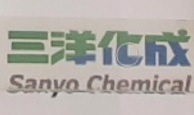 | 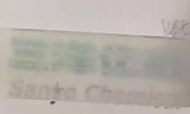 |
| Transparent ABS resin/ FUNCTIVE P-600(5%) | 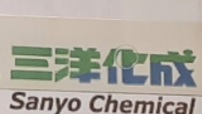 | 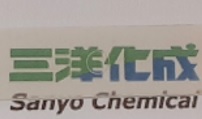 |
Test chemical
Attack NEO Antibacterial EX W Power" by Kao Corporation
Application Examples of "FUNCTIVE"
By Improving the Chemical Resistance of ABS Resin, "FUNCTIVE" is Expected to be Applied to the following Applications.
1
Automotive Exterior Components

Door handles, side mirror housings, spoilers, radiator grilles, etc.
Expected Effects
Prevents resin cracking caused by solvents in paints, leading to greater freedom of paint selection and higher yields.
2
Automobile Interior Components

Console box, door trim, instrument panel, etc.
Expected Effects
Prevents ABS resin from cracking and surface degradation due to contact with sunscreen used by the user or alcohol disinfection.
3
Consumer Electronics

Washing machines, refrigerators, display frames for TVs, PCs, game consoles, etc.
Expected Effects
Cracks in the resin due to contact with detergents or alcohol disinfection can be prevented.
4
Home Facilities

Bathroom,washroom, kitchen, etc.
Expected Effects
Cracks in the resin due to contact with detergents, etc. can be prevented.
Related Information and Topics
Related Products
| Additives for resins |
|---|
| Link to Sanyo Chemical's corporate website |
|---|
Technology and Application Topics
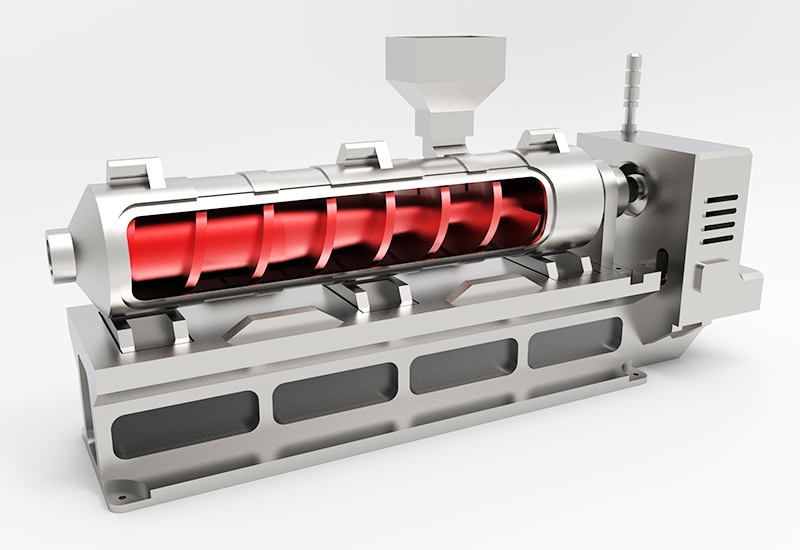
This page has been prepared solely for information purposes.
Sanyo Chemical Industries, Ltd. extends no warranties and makes no representations as to the accuracy or completeness of the information contained herein, and assumes no responsibility regarding the suitability of this information for any intended purposes or for any consequences of using this information.
Any product information in this brochure is without obligation and commitment, and is subject to change at any time without prior notice.
Consequently anyone acting on information contained in this brochure does so entirely at his/her own risk.In particular, final determination of suitability of any material described in this brochure, including patent liability for intended applications, is the sole responsibility of the user. Such materials may present unknown health hazards and should be used with caution. Although certain hazards may be described in this brochure, Sanyo Chemical Industries, Ltd. cannot guarantee that these are the only hazards that exist





